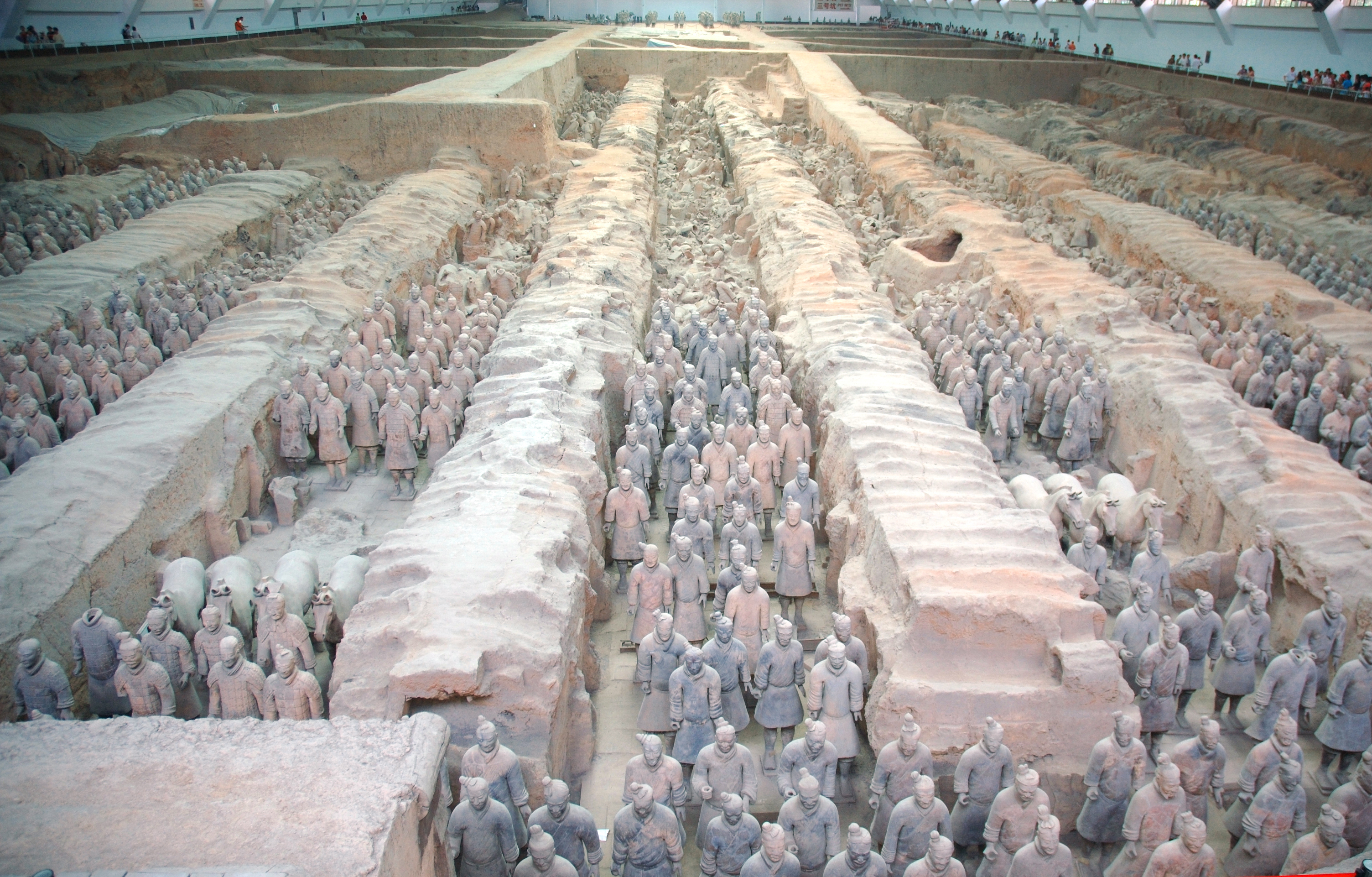
November 27, 2013, by Tony Hong
Xi’an and the Terracotta Army
By Felicity Woolf,
Studying an MA in Contemporary Chinese Studies at the University of Nottingham Ningbo China.
We recently travelled to Xi’an, the old imperial capital, about 1000 kilometres northwest of Shanghai. It is the home of the Terracotta Army – or Bing Ma Yong (soldiers horse clay) in Chinese.
Our first impressions of the city were not good. The 40 kilometre drive from the airport took us through roads lined with tower blocks, many under construction or simply empty, signs of the speculative building so characteristic of many of the big cities. But it wasn’t just the urban sprawl that was disheartening. There was also a heavy pawl of misty pollution making everything seem grey and dirty; trees and shrubs were covered in fine dust. The guide book had warned us that Xi’an’s heavy industry makes the city notoriously polluted, and that many visitors are disappointed on first arrival. We were no exceptions.
However, for me, there was immediate compensation. I could understand quite a lot of what was being said, from the taxi driver to the hotel staff, or even just walking down the street. This is because I am learning Chinese as it is spoken in Beijing, and Xi’an is near enough to Beijing for me to be able to hear a difference. Northern Chinese is much more guttural, with rolled ‘rs’; Chinese down here in the south is much softer and more sibilant.
The main purpose of our visit to Xi’an was to see the Terracotta Army, and we had organised a taxi for the day to take us to the site, located about 30 kilometres east of the city. The site is the mausoleum of Emperor Qin, famous for having united the warring states in the 3rd century BCE to make what is now eastern China. Qin dynasty China makes up most of the populated states of China, leaving out the vast areas to the west where only 6% of the mostly non-Han population live today.
The three ‘pits’ or archaeological digs which reveal the Terracotta Army are a truly magnificent sight, especially pit 1, which is thought to contain 4,000 life-size male figures. About 2,000 are visible. The pit is massive – 230 metres by 62 metres. The front ranks of soldiers consist of about 65 life-size men standing in four rows. Behind them, 10 corridors of men standing four abreast, between earthwork partitions, disappear into the distance. Rows of horses are also visible among the soldiers – these once drew wooden chariots. The men were armed with spears, but now stand with right fist outstretched around an invisible spear shaft; the wood has decayed although many bronze spear heads have been found.
The army is not presented to the visitor as a work of art, but that is surely what it is. Although the bodies of the soldiers are made from the same moulds, each face is different. While the shapes of heads and types of headdress can be grouped, each head is unique, with individualised features, hairstyle, expression, facial hair and so on. For me, the army expressed the essence of Chinese art, that is the repetition of a basic form with tiny changes and subtle differences giving each sculpture its uniqueness.
For the Chinese government the Qin mausoleum has other purposes. Primarily it is presented as an additional ‘wonder of the world’ (we have Jacques Chirac to thank for this description). It expresses Chinese nationalism, as Qin, much admired by Mao, is seen as the great unifier – never mind his obvious narcissistic and tyrannical tendencies. In one display area, the visitor is reminded that it was the Communist Party that built the enormous compound and hangar-like roofs over the Terracotta Army and supported the excavations from the 1970s.
In fact, it is interesting to note that the site was reportedly ‘discovered’ by a peasant farmer in 1974 during the Cultural Revolution – i.e. during the period when much of Chinese culture was being systematically destroyed. There is a persuasive argument that the convenient discovery of the site allowed the CCP to redeem itself somewhat by promoting the Terracotta Warriors as an international tourist site after a difficult period. The male soldiers can be seen as ‘the people’ (women don’t count) of the PRC. Religion and class are mostly absent, although there are some signs of hierarchy with officers and a few generals in evidence.
A visit to the Warriors also brings up the issue of authenticity and comparative approaches to archaeology. The visitor is made aware of how many figures and horses were found in fragments and then how Chinese archaeologists go about reconstructing the figures from these bits. You can see the process – some figures are wrapped in what looks like clingfilm as they undergo repair. But this also makes you wonder how much of what you are looking at in the pits is ‘real’ and how much is reconstructed. How many complete figures existed or are they all mended? Does this really matter? It is the sheer number of life size, standing figures that create the unforgettable experience when you are there. Would it be the same if the visitor only saw trenches of broken bodies? I don’t think so.
The next day we had planned to cycle around Xi’an’s city walls, but the pollution discouraged us. Instead, we wandered around the Muslim quarter and bought walnut sweets and dates and found an excellent restaurant that made wonderful spicy deep-fried prawns for lunch. I don’t think we will go back to the city, unless the pollution magically disappears, but seeing the Terracotta Warriors was probably the most intense and memorable cultural experience we have had so far in China.
No comments yet, fill out a comment to be the first

Leave a Reply